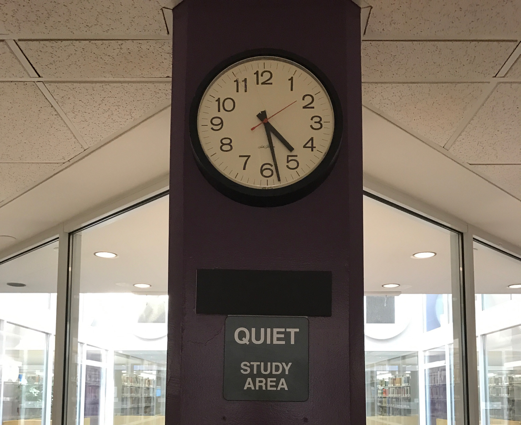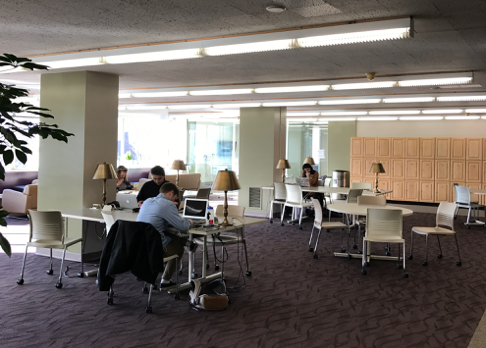An Ode to Olin

Olin-Chalmers Library and I have been through our ups and downs, but I always know it’s there for me. Be it late-night studying before an Orgo exam during my first-year spring, or goofing off with friends when I can’t fathom doing another data analysis problem, Olin’s always got my back. This architectural masterpiece (the finest in mid-‘80s aggregate concrete postmodernism surgically attached to an early-‘60s modernist box) boasts three main floors. As you ascend up its spiral stairs, the noise level decreases along the way. The third floor, the “Quiet Zone,” is my main home, with occasional excursions to the second when I really want to be distracted. Olin is my rock, my love, and occasionally, my mortal enemy. So just how did a library assume this complex role in my life? Let’s dive in.
Having been someone who did all his high school homework at the kitchen counter, the idea of doing work in a library was certainly a foreign concept to me. I experimented with all sorts of locations to do my work: lower Gund Commons, McBride dorm lounge, my room, second-floor Olin. Nothing felt quite right. A la Goldilocks, lower Gund was too quiet, the lounge was too loud; I had yet to find that “just right” space. One day I found myself wandering into Olin-Chalmers, as lost as ever. I began my ascent to the second floor, but felt compelled to keep walking up the spiral stairs up to the infamous third floor. I had heard rumors of the dreaded third floor: it’s so quiet you can hear a pin drop, it’s where fun goes to die. Yet, some otherworldly force told me to keep going, keep ascending.

A close-up of the infamous “QUIET STUDY AREA” sign
Upon arrival, I glanced around nervously. The “QUIET STUDY AREA” sign greeted me with its plain lacquer and rigid font. But, to my surprise, I did not see solemn faces nor feel glum vibes. The students sat on couches and booths, quietly, but purposefully typing, reading, or writing away. I continued my journey around to the Chalmers section of the third floor. Again, I saw nothing but dedicated students who were very into their work. Whispers arose from various booths and seats, but nothing above a hushed tone. My understanding of the third floor was rapidly evolving. No longer did it feel like a mythical place of torment for the studious, but a self-selecting place of quiet study. This got me thinking: Everyone works differently. Some require the casual conversation of a coffee shop to stimulate their brain waves. Others prefer to engage their work with friends and partners in full discussion. Then there was me. Like Goldilocks, I had finally found what was just right.

My normal place of work – the backside of third-floor Chalmers
Since that day on which some omnipotent being pushed me to venture beyond the second floor, I haven’t looked back. Every day, without fault, I am on the third floor for some extended period of time. Whether it be reading up for a quiz the next day, grinding out an essay, or even watching a new episode of something on HBO, I’m probably doing it on the third floor of Olin. Some days I must drag my body up the stairs in anticipation of hours of work. Other days I bounce up the stairs in anticipation of a few chapters, hanging out with friends, and whatever else the day might hold. No matter the content or extent of my work that evening, Olin never fails to be there. Tucked away between Gund Gallery and Rosse Hall, its glowing K-Card readers and black doors keep calling me back, day after day.
As previously mentioned, everyone is a different type of worker. Don’t let preconceived notions of workspaces deter you from studying somewhere. Go to all of them; try every study spot until you find a place you can call your own. Having one dedicated study spot that will always welcome you back can make all the difference.
